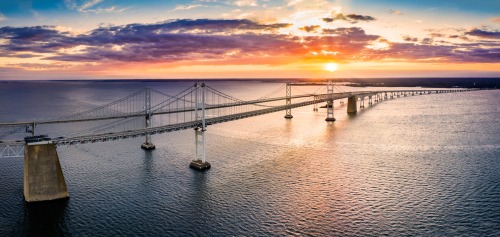
Building on efforts from Gov. Larry Hogan’s administration to counter congestion and assess future traffic demand for the Chesapeake Bay, Maryland progressed to a $28 million, Tier 2 National Environmental Policy Act (NEPA) study this week.
“At my direction, we are immediately launching a critical $28 million Bay Crossing Tier 2 Study, which will not only study the new crossing, but also look at solutions for the entire 22-mile corridor from the Severn River Bridge to the 50/301 split,” Hogan said. “This is the critical next step which is needed in order to move forward so we can make a new Bay crossing a reality in the years to come, and it is just one more way that together we are truly changing Maryland for the better.”
Included in this are both the Bay Bridge and 22 miles of approach highways, a corridor Maryland is considering as an alternative for modernization. Tier 1 analysis focused on ferry service, rail, bus and transportation system/demand management, but none of these were determined to meet the Tier 1 purpose and needs to be stand-alone options. The Tier 2 study will turn to buses, ferries and transportation system/demand management, including pairing these with other alternatives.
Progress to Tier 2 followed completion of Tier 1 NEPA in April, as the Maryland Transportation Authority (MDTA) and Federal Highway Administration (FHWA) together studied potential improvements through the NEPA process, which governs projects with federal funding or approval. The corridor – dubbed Corridor 7 – was determined to be the Selected Corridor Alternative following that Tier 1 study, and a combined Final Environmental Impact Statement (FEIS) and a Record of Decision.
“The Tier 2 study will identify and evaluate a No-Build Alternative as well as various crossing alignments and types—such as a new bridge, a bridge/tunnel or replacement of existing spans,” James Ports, Jr., MDTA chairman and Maryland Transportation Secretary, said. “We’re eager to engage with residents, communities, officials, stakeholders and other members of the public on the Tier 2 Study. As we learned from the Tier 1 Study, the public’s contributions in this process are invaluable.”
This ongoing study will take four to five years to complete, and if a build alignment alternative is selected, another Record of Decision will be required before the project moves to final design, right-of-way acquisition and actual construction. If the state ultimately decides to go with a No-Build Alternative, though, as referenced by Ports, no action would be taken.